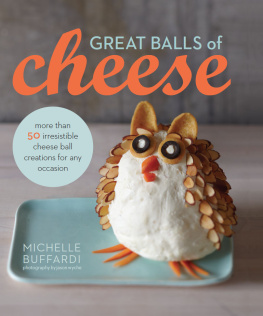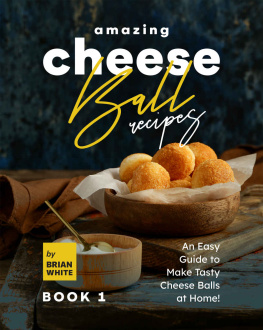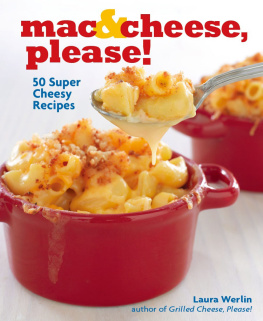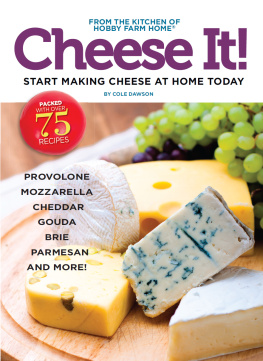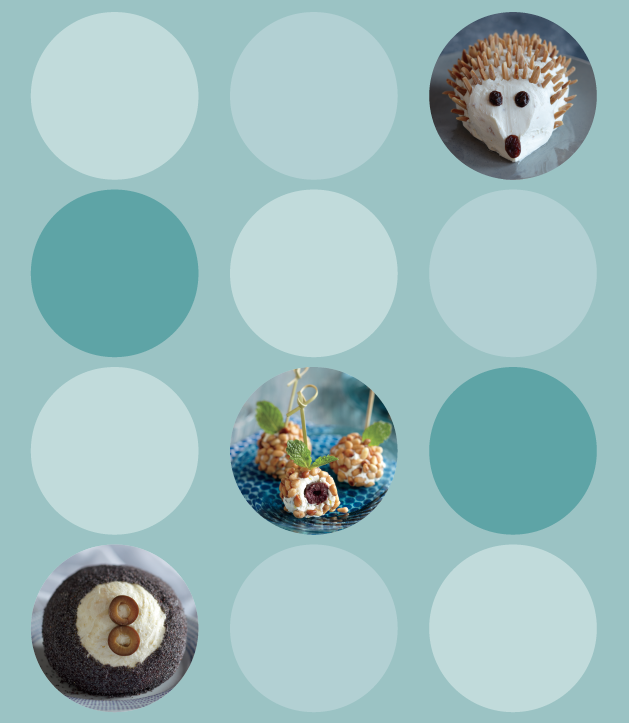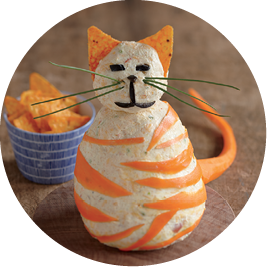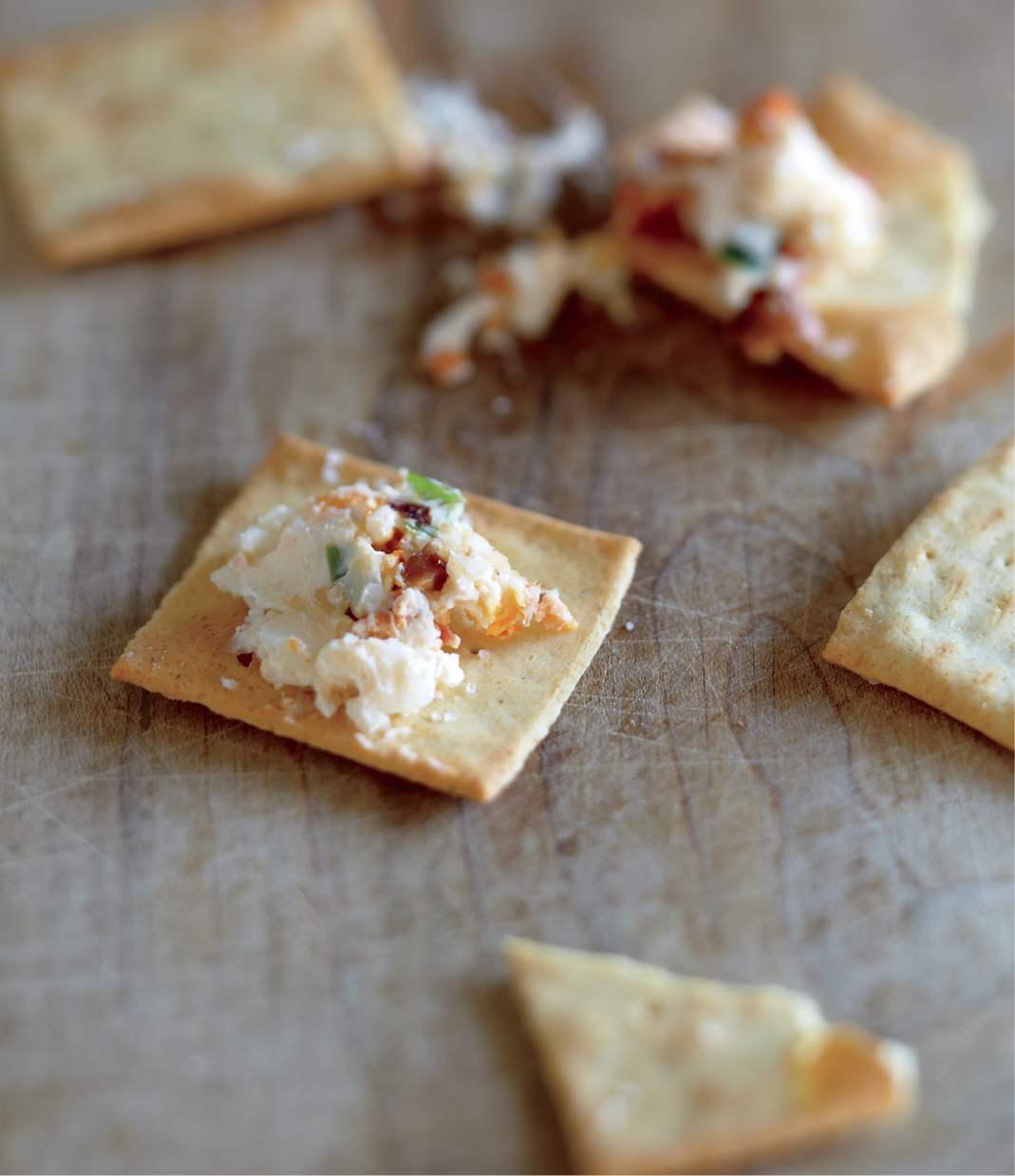michelle
buffardi
photography by jason wyche
HOUGHTON MIFFLIN HARCOURT
Boston New York 2013
Copyright 2013 by Michelle Buffardi.
Photography copyright 2013 by Jason Wyche
Food styling by Joyce Sangirardi
Prop styling by Kira Corbin
Interior design and layout by Kara Plikaitis
Published by Houghton Mifflin Harcourt
Published simultaneously in Canada
www.hmhbooks.com
For information about permission to reproduce selections from this book, write to Permissions, Houghton Mifflin Harcourt Publishing Company, 215 Park Avenue South, New York, New York 10003.
Library of Congress Cataloging-in-Publication Data:
Buffardi, Michelle, 1979
Great balls of cheese / Michelle Buffardi.
pages cm
Includes index.
ISBN 978-1-118-49720-3 (hbk.); ISBN 978-0-544-18666-8 (ebk.)
1. Cheese. I. Title.
TX759.5.C48B84 2013
641.373--dc23
2012045308
v1.1013
dedication
For Deb
Thank you for always being supportive of my cheesiness.
acknowledgments
Once I got started thinking about cheese balls, I wasnt able to stop. If you thumb through this book, youll see what the inside of my head looks like, or at least has looked like for the past two years. I dream in cheese. I think in terms of cheese. And when I see an object, such as a cat or Christmas ornament, or a stranger on the train with a particularly round head, I imagine it as cheese.
For a girl who dreams in cheese, this book is a dream come true, and I owe many people a debt of gratitude for making it happen.
Deb, for making this possible, and for always pushing me, nicely, in the ways I need to be pushed. Thank you for being a mentor and friend. To all of my coworkers for their support, inspiration, and cheese ball enthusiasm, and especially to Bob and Sharon for having my back.
Justin Schwartz, my patient, smart, cheese-loving editor and early-on believer, and Stacy Glick, my agent, who both understood me immediately and guided me through the process of writing a cookbook so well that it almost seemed easy (it wasnt).
Jason Wyche, who managed to photograph cheese to be both beautiful and funny. Kira Corbin, a brilliant prop stylist who took the time to get to know me (and taught me that I like the color blue). Joyce Sangirardi, who styled every single one of the cheese balls on these pages just as I wanted themsome even betterand her super-patient assistant Marianne Zanzarella, who mixed, by hand, dozens of cheese balls, which was no easy task.
Gregory, my best friend and coconspirator, who has let me boss him around in the kitchen for almost half of our lives, and who went above and beyond to help me create the recipes in this book.
My parentsall four of themwho inspired and supported a somewhat appropriate balance of creative and crazy. Thank you for always believing in me. To the rest of my family and friends: Youre welcome for the months of cheesy snacks, and thank you for being great.
And to Bob Powers, whose love makes my life better.
introduction
According to legend, the first cheese ball in recorded history was made in 1801 by Elisha Brown Jr. on his farm and presented to President Thomas Jefferson. This alleged cheese ball weighed 1,235 pounds. The next cheese ball served after this (unverified) historical moment was likely made by someones grandma for a holiday gathering. It was probably covered in nuts and clocked in at around 1 pounds.
Somewhere along the way, cheese ball became associated with the uncoola term reserved for bad jokes, ugly gifts that beg to be regifted, or hideous patterns on a tablecloth or skirt. But the appetizer that is literally a ball of cheese deserves much more respect. Cheese is as fashionable as ever, and a make-ahead appetizer that requires little prep and, in most cases, no cooking and no special equipment or skill, and that makes us think fondly on the holiday gatherings of our youth deserves its chance in the spotlight.
cheese ball basics
An idea as simple as a ball of cheese shouldnt be overthought, but there are some key rules to keep in mind.
THE CHEESE BALL: Cheese balls can be savory or sweet, and the term balls is used looselycheese can be molded into various shapes, like animals, trees, snowmen, or logs, in varying sizes. The large cheese balls in this book can all be made into minis for a bite-sized presentation, or logs if you prefer.
THE METHOD: You can use a stand mixer, a handheld mixer, or a spatula and a bowl to mix your cheese ball. I dont recommend using a food processor to blend your ingredients; it will work, but it whizzes the cheeses up too much and the mixture will take much longer to set up. Refrigerating your cheese balls before serving is a mustthe softened cream cheese needs to be chilled for the best texture, the mix-ins need a chance to mingle together for the best flavor, and a firm cheese ball will hold its shape the best. Cheese balls dont take long to make, but if youre planning on serving one, think ahead: At least two hours chilling time in the fridge is ideal.
THE CHEESE: The base for most cheese balls is a soft cheese, usually cream cheese, because its malleable, mild flavored, and firms up nicely in the fridge. In all the recipes that follow, I call for regular cream cheese, but if you want a lighter, less-rich cheese ball, you can substitute low-fat or Neufchtel cheese; I dont recommend fat-free cream cheese because the results will be a bit grainy and wont taste as great. Soft cheeses, like cream cheese or goat cheese, should be softened before you make your cheese ball; it will be much easier to mix that way. Leave your soft cheese on the counter for an hour or so; hard cheeses (like cheddar) dont need to be left out.
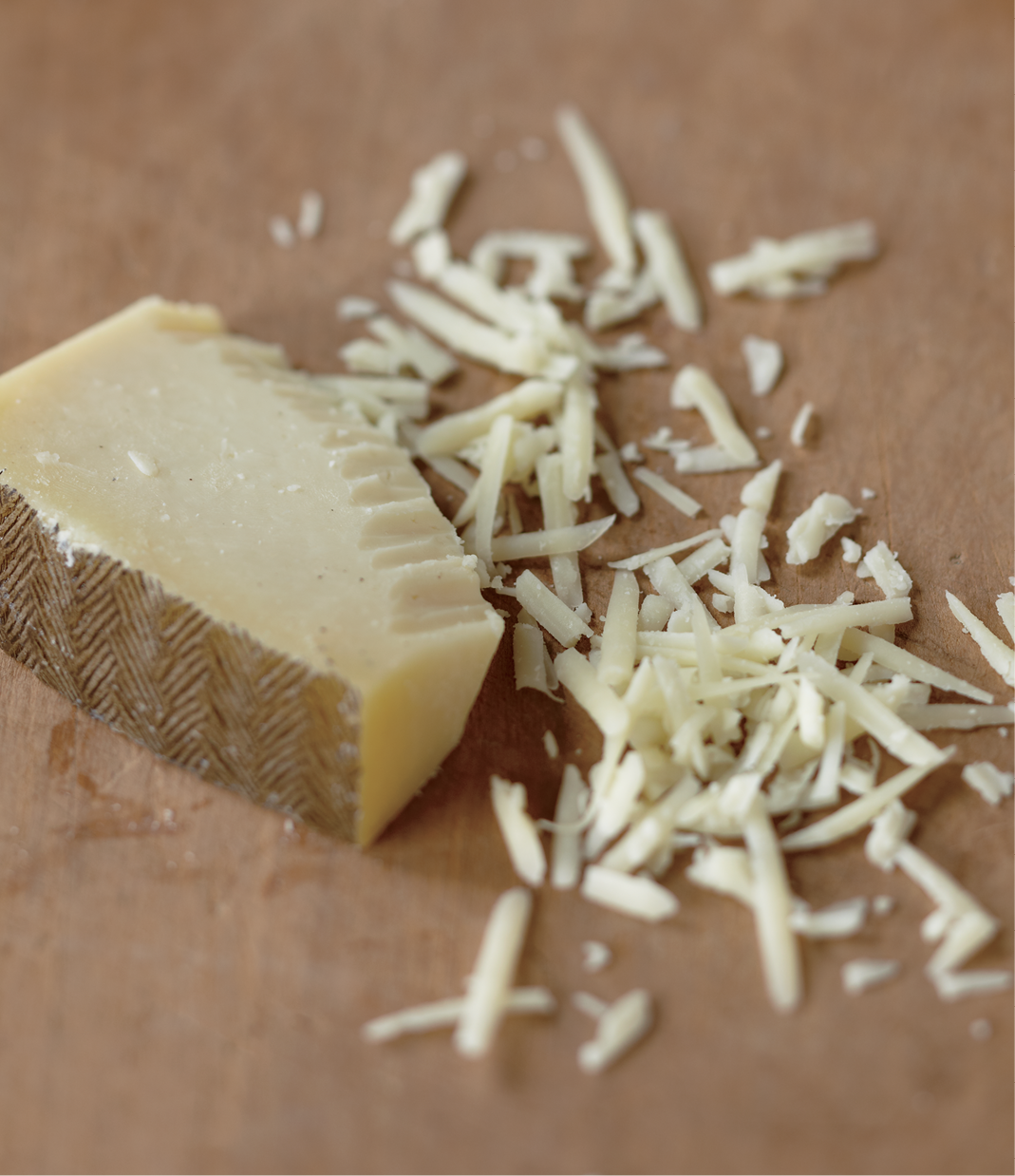
Cream cheese can stand alone, but in many recipes another cheese or combination of cheeses is used. Cheddar, Swiss, Manchego, blue, and goat cheeses are used as both stabilizers to help the ball hold its shape and to add flavor. Dont feel like you have to go to a specialty cheese shop to shop for a cheddar cheese that youre going to mold into an owl; the cheese sold at the grocery store will suffice. But I will hold firm that you should buy your cheese in brick form and shred it yourself; the preshredded kind has additives to keep it from sticking together in the package, and that affects the flavor and texture of your cheese ball. Take the extra few minutes to shred the cheese yourself.
THE COATING: Most cheese balls are coated in somethingnuts, seeds, chopped herbs, or crushed cookies or crackersfor flavor and texture. Dont coat your cheese ball, or decorate it for that matter, until youre ready to serve it or the coating (or decorations) will get mushy. If youre bringing a cheese ball to a party, keep the ball and the coating in separate containers and assemble just before serving. And a word or two on nuts: Always toast your nuts. This goes for cheese balls and most other things. Toasted nuts have a deeper, nuttier (yes, nuttier) flavor, so dont skip this step.

